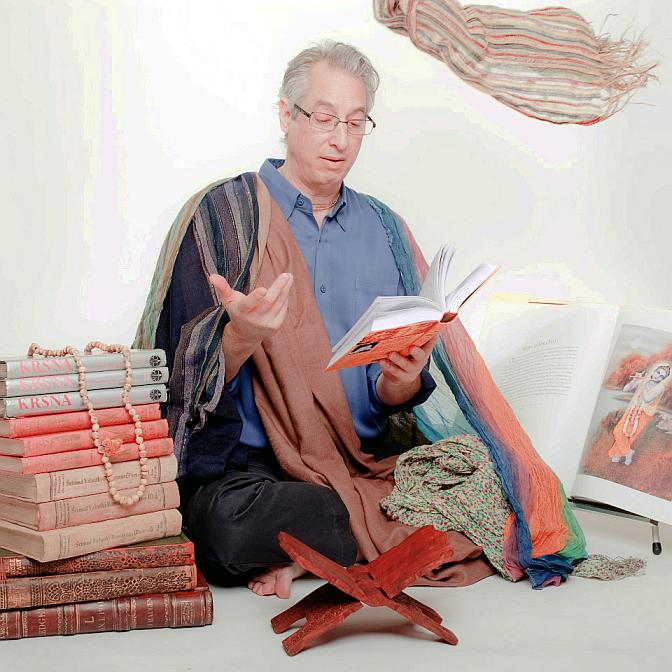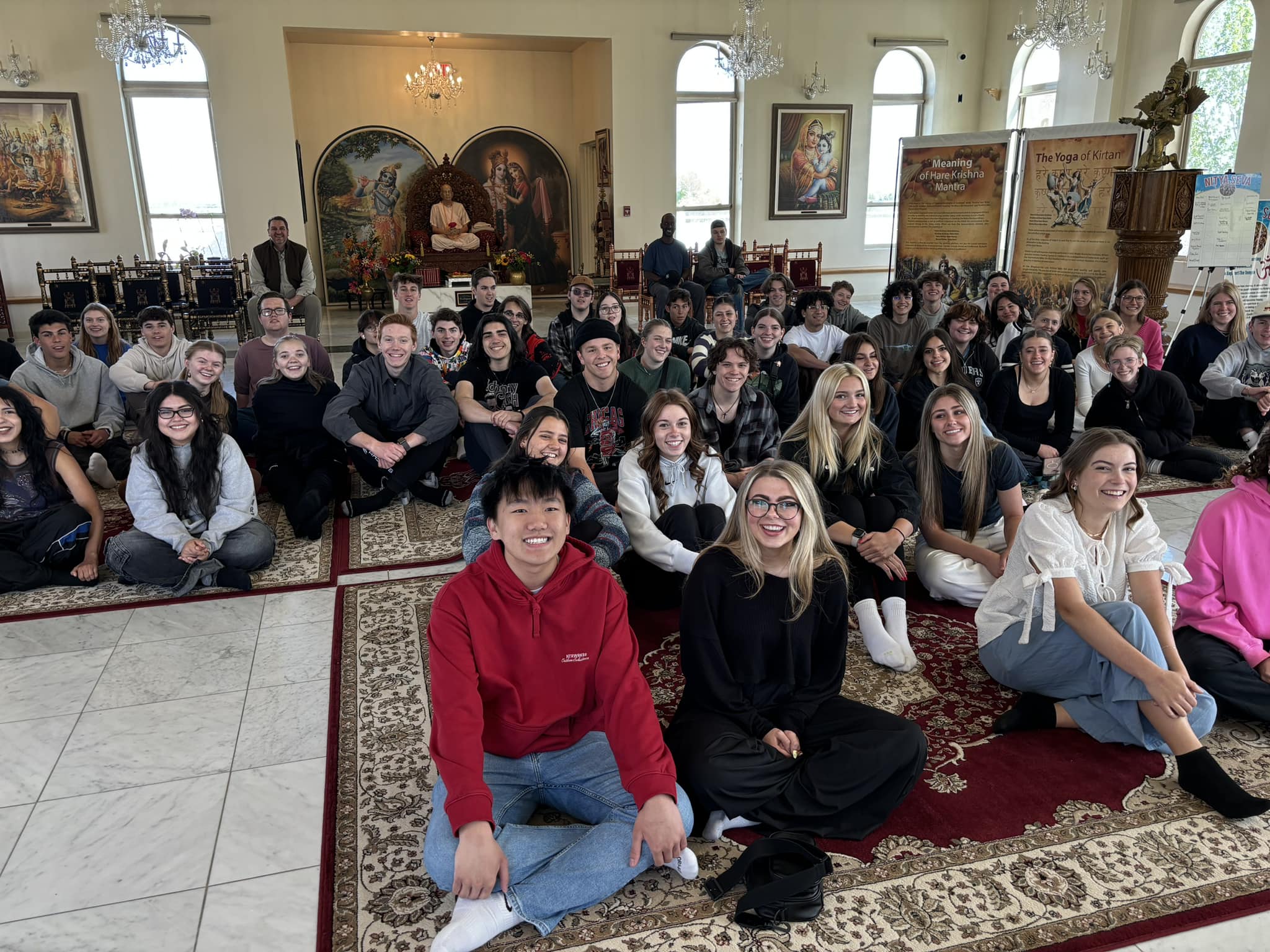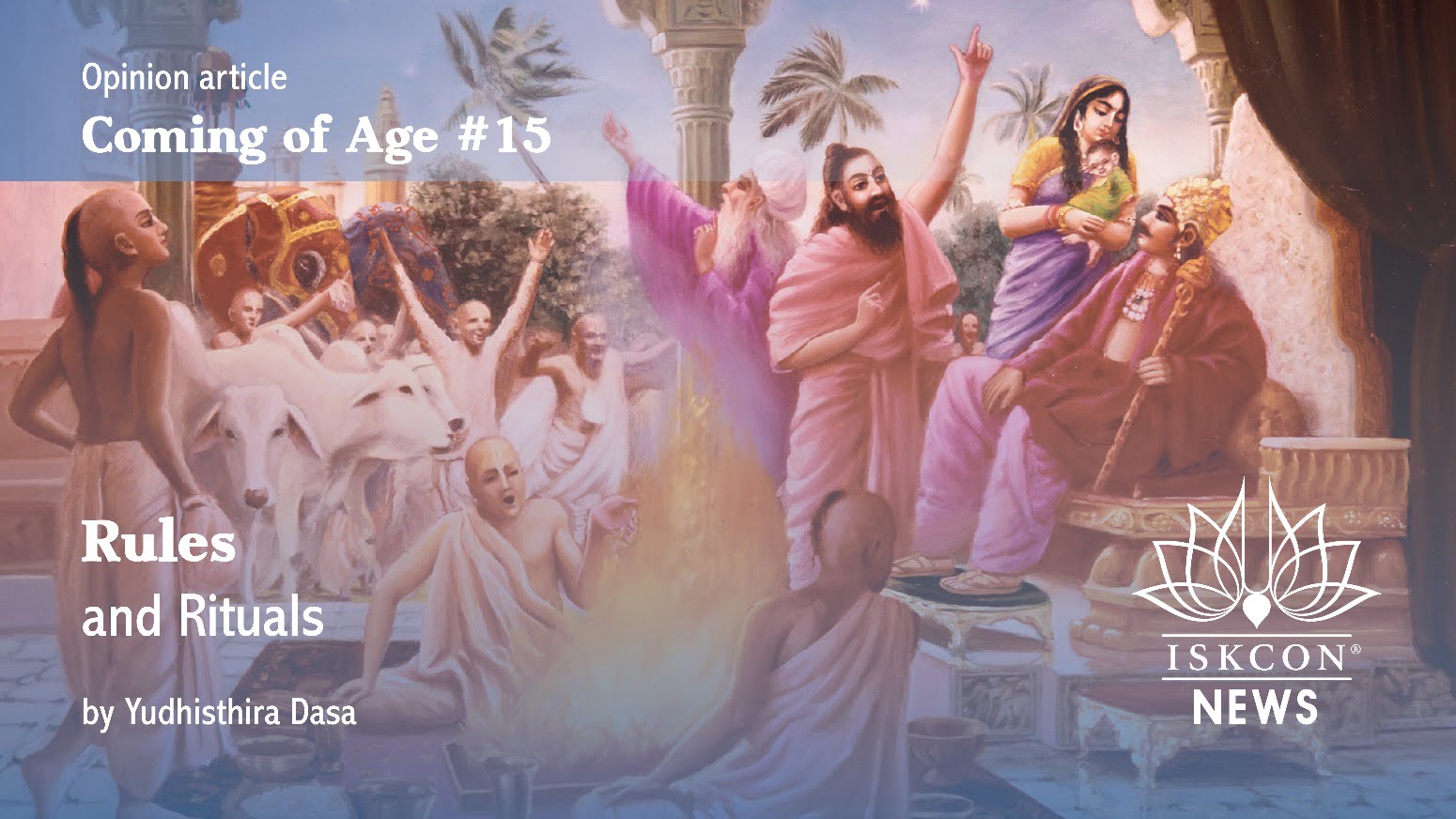Yogesvara Das: Teaching an Ancient Scripture in Modern Times
By Madhava Smullen | Nov 17, 2012

Yogesvara Das (Joshua M. Greene) has been studying the Bhagavad-gita for a long time. For forty-three years to be exact, since he joined ISKCON as a student in London in 1969.
But the well-respected academic and New York native still feels he has a long way to go in his understanding of the ancient spiritual text of India.
“I’m still first encountering the Bhagavad-gita,” he says. “I’m still a neophyte student of its teachings. I’m still trying to understand how profound the text is. The Bhagavad-gita unfolds in progressive layers of depth, according to our realization and spiritual progress.”
In 1982, after thirteen years of living in ISKCON ashrams around Europe and India, Yogesvara moved to New York, where he built a distinguished career in television programming, PR, academic speaking, and even working with the United Nations.
All along, however, the Gita’s teachings were a constant in his life. And he was about to get the chance to pass what he had learned on to others.
In 2005, after the publication of his George Harrison biography Here Comes the Sun, Yogesvara was touring a live show that included a talk by him as well as an exploration of George’s musical journey by The Godfrey Townsend Band.

A young Yogesvara Das with the author of Bhagavad-gita As It Is, Srila Prabhupada
After a performance at Jivamukti Yoga in New York City, he was invited to teach Bhagavad-gita at the renowned school. He’s been teaching classes there ever since, as well as at other yoga centers, universities and yoga teacher training gatherings in New York, Connecticut, and Washington D.C.
Currently, Yogesvara’s main engagements are two hour-and-a-half long classes on the Bhagavad-gita every week. The first, held on Mondays at 7:15pm at Revolution Yoga in Long Island, is entitled The Heart of Yoga and draws around twenty students per class.
The second, called Sunset Gita, is held at Jivamukti Yoga at 8pm every Tuesday evening, with attendance that can vary anywhere between ten and two hundred people.
It’s taken some time for the class to become what it is today. Yogesvara’s first course at Jivamukti was a twelve-part series on the Bhagavad-gita.
“It was well-received, but for me, it was unsuccessful,” he says. “For the simple reason that you cannot do justice to eighteen chapters of Bhagavad-gita in twelve sessions.”
Remolding his classes, Yogesvara discovered that the Bhagavad-gita lent itself more readily to exploration by topic than the more linear chapter-by-chapter approach.
“The knowledge of the Gita is not so conveniently packaged that it’s all in one section,” he explains. “For example, if you wanted to study about Paramatma, you could just read chapter thirteen. But if you do that, excluding other references, then there are dimensions to Krishna’s explanation about how He dwells in everyone’s heart that you would miss.”

Yogesvara gives a speech at the US Holocaust Memorial Museum in Washington, D.C.
Since switching to a more topic-based approach, Yogesvara’s classes have continued to evolve, becoming ever-more spontaneous. Today, some feature special guests such as visiting professors or spiritual teachers like Radhanath Swami. Others focus on a theme.
Recently, for example, Yogesvara used the destruction wrought by a superstorm in the Northeastern United States as an opportunity to discuss the classic question: “If God is good, why is there so much tragedy in the world?”
Most importantly, however, Yogesvara gets his topics by asking his students questions and listening to their responses. In this way, he’s able to make sure his classes are relevant to them and their lives.
One of the most common things students are eager for help with is relationships—they’re often perplexed and challenged by their relationships with friends, family, partners, bosses, coworkers, and fellow students. And the Gita’s insight on this problem never fails to capture their interest.
“If you can understand that you are not your body, but a divine spark of God—that you are beautiful, you are complete, you lack nothing, and that Krishna is there in your heart looking out for you—then you can relax a little,” says Yogesvara. “You can be less anxious and fearful about the challenges that you are confronting in your life. And that will open your mind enough for you to start thinking about how you can help other people.”
To present the Bhagavad-gita in a way that modern students can understand and relate to, Yogesvara uses both ISKCON founder Srila Prabhupada’s Bhagavad-gita As It Is, and his own book Gita Wisdom, an introduction to the text.

Yogesvara Das (front, center) with one of his Gita classes at Hofstra University
“Since Prabhupada started his mission, the world has evolved,” he says. “That was almost a half century ago. It’s a very different world now. On some level, the challenges and issues that concern people are the same as they were then—but on another level they’re not. There was a meaning to the language that Prabhupada used that is not understood as readily today. So those of us privileged to be devotees of Krishna in the 21st century have a responsibility to identify a new language, a new kind of terminology with which to convey Prabhupada’s teachings.”
And while some of Yogesvara’s students move on to the next thing, many are extremely grateful to receive these teachings in a way they can understand.
Some have become weekly attendees at programs held in the Bhakti Center in New York. Others have attended japa retreats in New Vrindaban, West Virginia and become fervent chanters of the Hare Krishna mantra. Some have traveled on pilgrimage to holy places in India with yoga teacher Raghunath Cappo. And some have even gone on to receive initiation into the Gaudiya Vaishnava line.
Seeing this means a lot to Yogesvara. “It helps me to get up in the morning,” he says. “If I didn’t feel that I was doing something to contribute to my spiritual master’s mission, I don’t know how I could go on with my life.”
But when asked what his future plans for his classes are, Yogesvara is quick to explain that it’s missing the point to set the same kind of material goals one might have for a business undertaking to teaching the Bhagavad-gita. He has, he says, trained himself out of plans to increase his students or sell more copies of his Gita Wisdom book.
“If you teach the Bhagavad-gita with the right frame of mind,” he says; “If you do it because you really care about people and want them to be happy in their lives; you want them to come to know Krishna; you want them to have a sense of the difference that the Gita can make in their lives; then you’ve already reached your goal. You’ve already fulfilled your purpose.”














